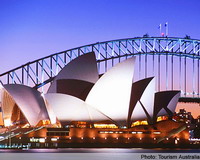Login form
Bridges
 What do you think the first bridge looked like? If you said a log or tree trunk across a river, you’re probably right. That’s what the experts think.
What do you think the first bridge looked like? If you said a log or tree trunk across a river, you’re probably right. That’s what the experts think.
People might also have crossed a stream in early times by stretching a few vines across it. They could walk on the lower vines and hold onto the top vines for balance.
These bridges wouldn’t have lasted long. A raging river could carry away a log bridge. Vines could rot or break. Bridges nowadays are much stronger.
WHAT DO BRIDGES DO?
Bridges can cross water. Some bridges over water move to let boats through. Others are high enough that boats can pass beneath. Bridges also cross valleys, ravines, railroad tracks, roads, and other things that block the way.
Some bridges carry cars and trucks. Some bridges carry trains. Some carry only people on foot. Some carry water. Bridges that carry water are called aqueducts.
Modern bridges are marvels of construction. They can span long distances and carry heavy traffic without collapsing. Yet they appear to float in the air.
WHAT ARE BRIDGES MADE OF?
Bridges can be made of many materials. Early bridges were made of wood or stone. Many wooden bridges were covered to protect them from snow and rain so they would last longer.
Stone was much stronger than wood. Many stone bridges built nearly 2,000 years ago by the ancient Romans still stand today. The Romans built their largest bridges to supply water to towns and cities. Aqueducts marched across valleys and plains over much of Europe.
Stone bridges were strong enough to carry all traffic until the railroad came along in the 1800s. Builders then began to use iron and steel. Steel and concrete are the major materials used today for building bridges.
Before steel became available in the 1800s, most bridges were arch bridges made of stone. An arch looks somewhat like the letter n. Steel made it possible to build much longer and stronger bridges called suspension bridges.
WHAT ARE ARCH BRIDGES?
Arch bridges are one of the oldest types of bridge. These bridges rest on a series of arches. Strong supports stand in between the arches. The arches transfer the weight of the bridge and its traffic to these supports. Boats or other traffic can move under the arches. The Romans built many stone arch bridges.
Some arch bridges in Europe even had shops perched on their sides! Shops lined London Bridge in England and the Ponte Vecchio in Florence, Italy. The Ponte Vecchio was built in 1345. You can still go shopping on this famous bridge.
Many arch bridges today consist of a single long arch. These bridges are usually built of concrete for strength.
WHAT ARE SUSPENSION BRIDGES?
Suspension bridges can span (cross) longer distances than any other bridges. The roadway—the part traffic moves on—is suspended from cables. Huge towers hold up the cables. The Brooklyn Bridge in New York City is an early suspension bridge. It was completed in 1883.
The longest suspension bridge in the world is the Akashi Kaikyo Bridge in Japan. This suspension bridge has a span of 6,532 feet (1,991 meters). That is more than a mile and a quarter.
Suspension bridges are not only the longest bridges built today, they are also some of the most beautiful. They seem to float in the air. The Golden Gate Bridge in San Francisco, California, is a suspension bridge known for its elegance. It has become a San Francisco landmark.
SOME OTHER KINDS OF BRIDGES
The simplest kind of bridge is a beam bridge. It’s a straight bridge made of a flat beam laid across two supports. Beam bridges today are usually made of steel or concrete. Bridge builders can increase the strength of a beam bridge by adding a truss. The truss consists of a network of triangles.
Did you know that some bridges float? The roadway rests on hollow, sealed containers that float. The floating containers that support the bridge are called pontoons. Pontoon bridges are useful when a lake or river is too deep to build standard supports for a bridge. Armies sometimes put down temporary pontoon bridges to cross rivers.
Source: Microsoft ® Encarta

